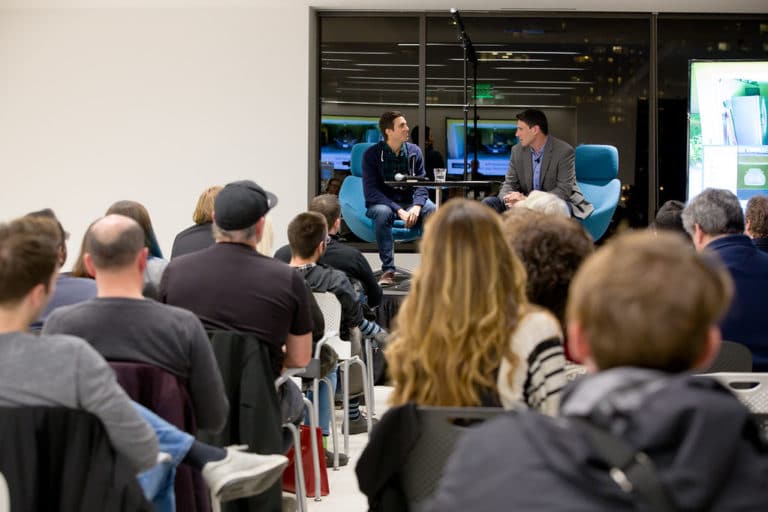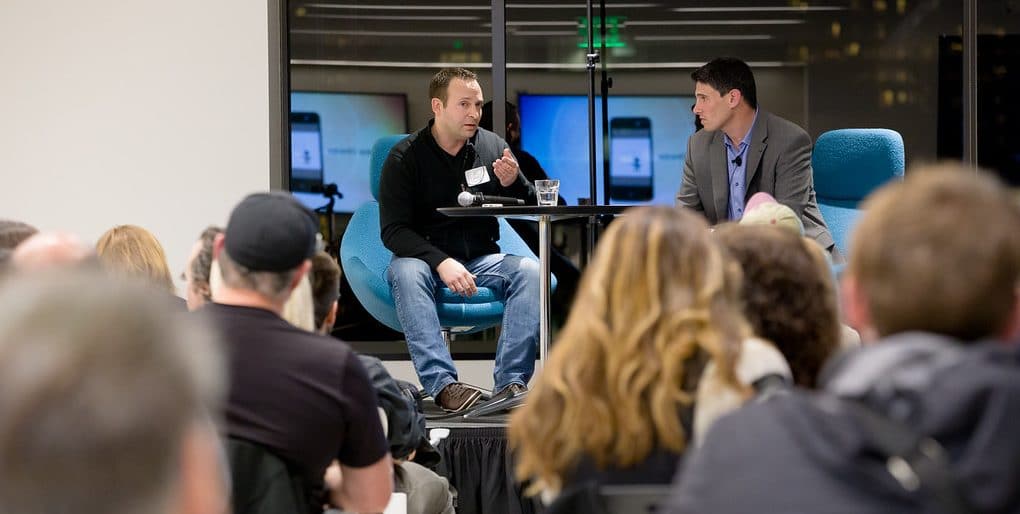
At this early stage of mobile AR, it’s all about experimenting with UX strategies and business models. A lot is still unknown about what types of AR experiences will resonate with consumers… just like early iPhone apps ten years ago.
Against that backdrop, the AppShow has rebooted with an AR twist. Having a long history of debuting apps like Waze and Uber (then UberCab), AppShow lead Seth Socolow has brought together the AR community to witness the unveiling of new ARkit (and soon ARCore) apps.
We attended the latest show a few weeks ago in San Francisco, which featured a rapid-fire procession of AR app demos. It was a representative cross section of the innovation happening out there. And in the spirit of our XR Talks series, we’re featuring each one.
See all the demos from the latest AppShow batch below (listed in order of appearance), along with our quick take on each one. And stay tuned for more educational videos every Friday.

Membit
Membit wants to bring new dimension to your photos. Given photos’ correlation to location, its app lets users place photos in places that solidify their meaning. And the image persistence (a key tenent of the AR cloud), is a differentiator. It’s also gamified the experience in a few ways.
Mars Portal
Developer Alberto Tono won the VR/AR Association‘s Weekend Workshop and thus a slot in the AppShow lineup. And he didn’t disappoint. His app, built solo over a 24-hour period, follows the AR portal format, and brings users into a realm of striking imagery of planetary objects.
Kabaq
Kabaq wants you to eat all your vegetables. Or at least you can make better ordering decisions at restaurants so that you’re happy with your meal (and thus eat all your vegetables). It’s a food visualization app — a projected killer app category for mobile AR — for restaurant menus.
YouAR
YouAR is a persistence engine for AR apps. What does that mean? Like Membit (above) it practices an underlying principles of the AR cloud which is image persistence. Rather than an app play, it’s a tool for other apps to have persistence between sessions and users (multiplayer).
Edmunds
Yes, that Edmunds. The online car shopping engine is getting into AR. Like BMW’s famous iVisualizer (but more “agnostic”) it’s app now lets auto shoppers kick the virtual tires by placing their prospective new ride in the driveway. It will even show you the car fits in your garage.
Embody Digital
Embody Digital is bringing more dimension (literally) to avatars. Fitting to millennials’ affinity for things like bitmoji, Embody similarly creates personalized avatars but these are in 3D. The use cases can span from social media to games to interactive ad campaigns for consumer products.
Aura
Flipping AR’s paradigm of adding graphics to the physical world, Aura wants you to bring your physical world into graphical form. Users can scan their environments and themselves to then be transported into the AR interfaces of far-flung friends or colleagues.
Mirra
Mirra wants to lower barriers for creating AR apps. Sort of a Power Point for AR, it contains various tools and 3D graphical assets (an important trend) so that basically anyone can build AR apps without any code. This is meant to do the heavy lifting so you can focus on the front end.
For a deeper dive on AR & VR insights, see ARtillry’s new intelligence subscription, and sign up for the free ARtillry Weekly newsletter.
Disclosure: ARtillry has no financial stake in the companies mentioned in this post, nor received payment for its production. ARtillry is a media partner of AppShow but no money has changed hands for the production of editorial coverage. Disclosure and ethics policy can be seen here.
